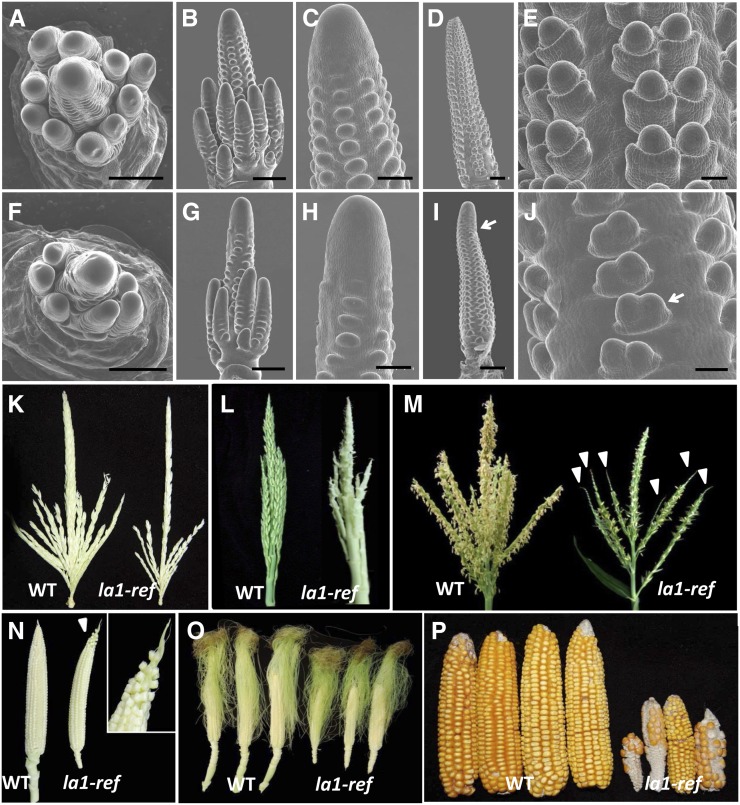Figure 5.
Comparison of inflorescences between wild-type (WT) and la1-ref mutant plants. All plants used for phenotype comparison are in the genetic background from the inbred line HN17, except in L, in which B73 is the background. A to J, SEM images of developing inflorescence in wild-type (A–E) or la1-ref mutant (F–J) plants. A and F show top view of 34-d-old tassels; B, C, G, and H show side views of 34-d-old tassels; and D, E, I, and J show side views of 54-d-old ears. Arrows in I and J indicate the bending ear and the uneven development of the ear SPM in la1-ref mutants, respectively. K to P, Development of the ear and tassel are largely disturbed in la1-ref mutants during late developmental stages. K, la1-ref mutant tassel has a reduced branch number before the heading stage. L, Spikelets are extremely arrested in la1-ref mutant tassels. M, Less pollen is shed from la1-ref tassels, and spikelets are aborted on the tips of tassel branches (arrowheads). N, Developing ears (silks were removed) show defective ear tips in la1-ref mutants; the inset shows the area to which the arrowhead is pointing. O, la1-ref mutants have reduced ear shank length and silk numbers. P, Mature ears of la1-ref mutants are much smaller and disorganized than those in wild-type plants. Bars = 500 µm except in C, H, E, and J, in which bars = 100 µm.

